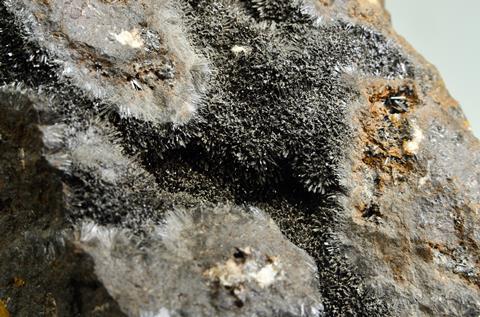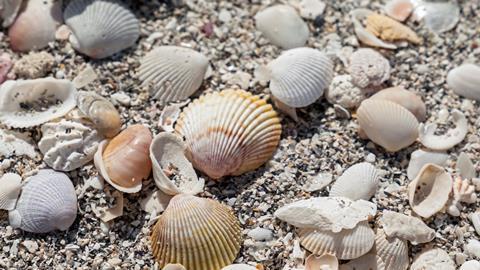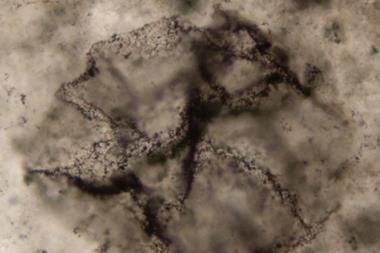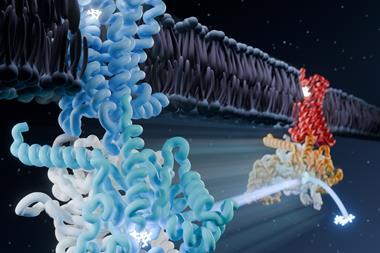Meera Senthilingam
This week, it’s not just your average day at the beach when Helen Scales is involved…
Helen Scales
If you ever happen to find yourself on a beach with a stethoscope round your neck, you might like to try a spot of eavesdropping. Find a boulder with a limpet or two – the conical seashells that look like miniature versions of mount Fuji – creep up and place the stethoscope next to them. Sit quietly and you might hear the rasping sounds as the little animals scrape at green films of seaweedy food from the rock.

The fact that limpets can rasp at rocks without smashing their gnashers to bits is a puzzle that’s recently been solved. It turns out that limpet teeth are the toughest known biological material.
Asa Barber from Portsmouth University led a team who put limpet teeth through their paces. They carved tiny nubbins of tooth material – 100 times thinner than a human hair – and they tested their tensile strength; they used a machine that stretched the samples and measured the force necessary to snap them.
The tensile strength of limpet teeth is an average of 4.9 gigapascals. This knocks spider silk off its perch as the strongest material made by a living thing, and puts limpet teeth up there with the toughest manmade materials, such as high-performance carbon fibres. And with teeth tougher than Kevlar, limpets could chew their way through a bulletproof vest – if they wanted to.
So, what makes limpet teeth so tough? They are made primarily of a mineral called goethite, an oxyhydroxide containing ferric iron. The immense strength seems to come down to structure of goethite, which forms nanofibres within the teeth. Each fibre is typically many micrometres long but only a few nanometres in diameter. Around 80% of the tooth material consists of these fibres, which are embedded in a softer matrix of protein called chitin.
A surprising find made by Barber and the team was the fact that their samples of limpet teeth had the same strength no matter what size they tested. On the whole, larger structures tend to be more likely to break than smaller structures because they contain more flaws.
Sculpted by the forces of natural selection, limpet teeth have evolved to brilliantly withstand the rigours of rasping at rocks and it’s thought that the dimensions and packing of the extremely narrow fibres have their parts to play in this.
Of course, the next step following on from a finding like this is to take these super-strong materials from the natural world and use them in the human world. Already, Barber has his sights set on developing high-performance materials to build yachts, aeroplanes and Formula 1 racing cars.
Nasa’s Mars rover Spirit identified goethite in a rocky basin called the Gusev Crater
Goethite isn’t only found in limpet teeth. It’s a common component of soils, formed through the weathering of other iron-rich minerals such as pyrite and magnetite. Of all the iron oxides, the only one that’s more abundant than goethite is haematite (Fe2O3).
Deposits of goethite have been found all around the world; they can form on hydrothermal vents in the deep ocean and as stalactites in caves. Especially fine specimens are cut and polished to make jewelry.

And this same stuff that limpets make their teeth from has also been found in outer space. In 2004, Nasa’s Mars rover Spirit identified goethite in a rocky basin called the Gusev Crater. This strongly suggested there’s been water on the red planet owing to the fact that the mineral usually forms in wet conditions. It wasn’t the first evidence for water on Mars, but the finding certainly helped make the case more compelling.
But a very long time before it was discovered in limpet teeth or on Mars, people knew about goethite because it’s a major component of the pigment ochre.
Ochres are made by grinding up various iron oxides and they range in colour from yellows and oranges, to reds and brownish blacks. The brown form, containing goethite, has been found in the famous cave paintings at Lascaux in France, thought to be around 17,000 years old. So, while palaeolithic people were creating some of the earliest works of art using goethite, the same species of limpets that were see today were already living down at the shoreline, using this same mineral to rasp at rocks with their record-breaking teeth, just as they have been for millions of years.
Meera Senthilingam
Science writer Helen Scales getting tough there, with the chemistry of goethite. Next week, chemical control.
Simon Cotton
The use of chemicals in crowd control goes back a long way. For many years, CN was used to incapacitate people; Mace, the name by which it is often known. Mace is thought to be a carcinogen, so the much safer CS has supplanted it since the 1960s.
Meera Senthilingam
Simon Cotton explains the chemistry enabling CS to take over the reins of chemical control in next week’s Chemistry in its Element. Until then, thank you for listening, I’m Meera Senthilingam.













No comments yet